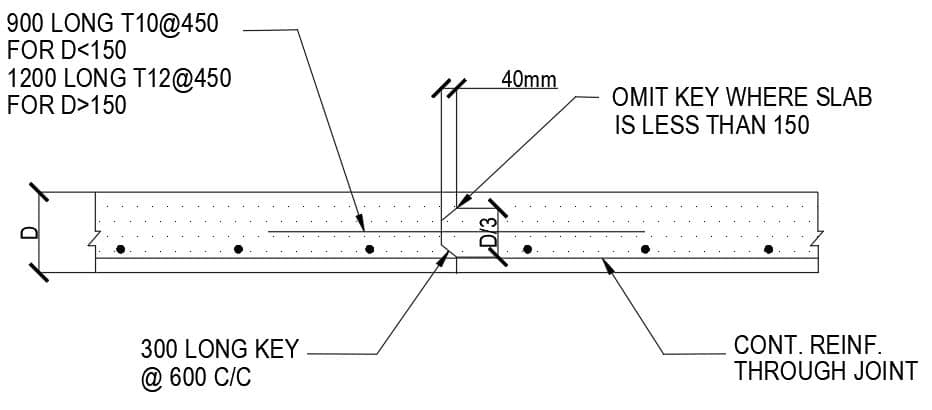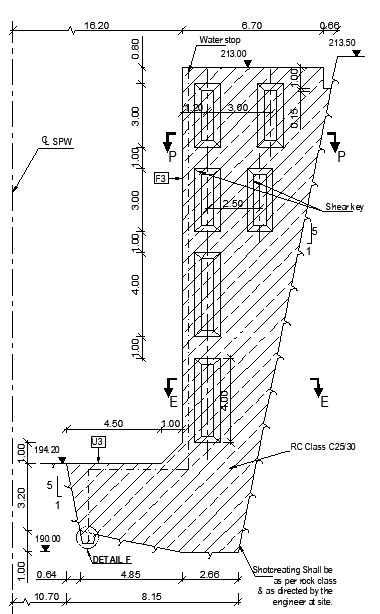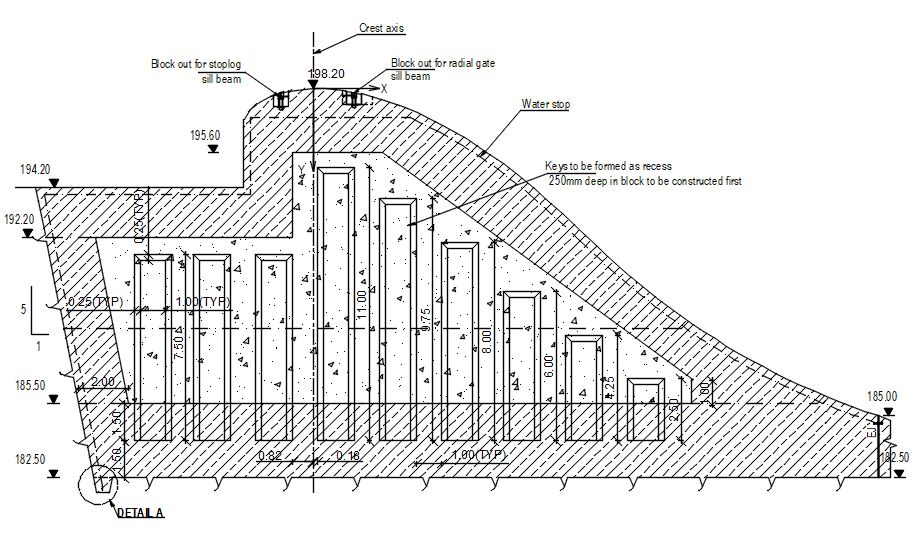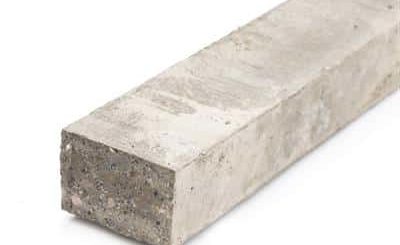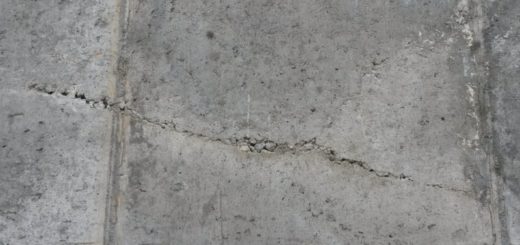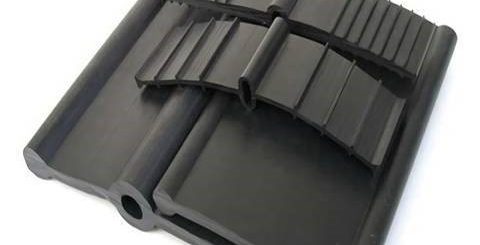Construction Joints in Concrete Structures
No structure is built without construction joints. Construction joints in concrete are inevitable as we cannot finish the work at once. Depending on the type of structural elements, vertical and horizontal construction joints are provided at different stages of construction.
The number of construction joints depends on the various factors such as availability of resources, time to be spent to complete a pour, the maximum possible supply of concrete, nature of the structure, thermal contractions, etc.
Vertical construction joints widely applied in the construction and horizontal construction joints are used for quite a few elements. Further, mostly it is suggested to avoid the horizontal construction joints as much as possible. However, there are occasions that we cannot avoid the horizontal construction joints. For example in the construction of a concrete wall, we cannot avoid construction joint just above the base.
Let’s discuss the advantage of construction joints in concrete structures.
Advantages
- Providing construction joint in concrete limits the area to be concreted in a one pour. For example, when there is a large area to be concreted, we divide the area into several pours. It speeds up the construction work as part completion of work can proceed to concrete work.
- Further, a large area cannot be concreted within a day. It will take a long time and a huge volume of concrete could be required. Therefore, as per the capacity of the batching plants and the contractor’s human resource, the size of the pours could be selected.
- When the thick concrete is constructed, there will be additional stresses in the concrete due to the restains in the thermal contractions. A thick foundation like raft foundations could do the concrete in several pours to avoid this issue to the restrains.
Disadvantages
- Having construction joints in water retaining structures always add a certain risk to its serviceability. There are higher chances of leaking the water through the construction joint. We have to provide the water bars as a solution which is a cost to the project.
- All the construction joints need to prepare properly before the next pour. Further, additional reinforcements need to be provided for joints of this nature.
Beam Construction Joints
When beams are constructed in two different stages, we have to provide construction joints. The type of construction joint is based on the span, load, and the location of the joint, etc.
Smaller beams that transferring smaller bending and shear forces, the general joint could be provided without many details. However, for beams carrying higher loads, much attention shall be made.
Where to provide beam construction joints
In general, the bending moment of the beam becomes nearly zero at the one-third of the span. Further, since the joint in the beam is vertical, it is advisable to provide it where the bending moment is lesser.
In addition, the shear force of the beam also becomes lesser away from the span. Therefore, generally, we provide construction joints nearly at one-third of the span.
However, depending on the condition of the site and as recommended by the structural engineer final position and arrangement of the joint could be finalized.
Beam Construction Joint Detail
No construction joints are kept at cantilever beams. The details shown below could be used for construction.
Providing dowel bars is not a must especially for smaller beams. Further, the construction joint shall be chipped adequately before placing the second pour.
Slab Construction Joint
Construction joints are kept at the site as discussed above as a measure to improve the constructability. Depending on the use of the slab and as per the structural requirements applicable construction details are provided.
Mainly there are two types of slabs. They are in normal construction slabs and slabs in water retaining structures.
When there is a water tank, a water bar shall be provided for the construction joint as an additional requirement to avoid water leakages through the construction joint.
In construction, it is not necessarily required to follow the above detail, and some times a chipped concrete surface will also be considered based on the spans and applied loads.
Further, timber planks made in the shape of the construction joint shear key is fixed to the side formwork. These keys could be fixed at a spacing of 600mm spacing.
Column Construction Joints
Horizontal construction joints will always need to provide construction requirements. It could be at the floor level and just below the beam. Those two joints cannot be avoided.
Depending on the resource availability and as per the other construction practices, the may be additional construction joint in concrete columns.
When the concrete is poured into concrete columns, there will be a soft ground layer on the top of the finished concrete. It shall be removed before place the new concrete.
Most of the time, it can be observed that columns are not chipped adequately to remove the top week concrete layer which does not have adequate strength. It can be considered as a construction defect and type of column failure.
Wall Construction Joint
Construction joint just above the base/foundation could not be avoided. Further, a water bar could be provided if the wall is constructed to retain the water.
In addition, it could be required to provide water bars at the construction joint where there is a requirement for water tightness.
When there is a water bar in the construction joint in the wall it could or it could not continue through the base. When the construction joint continues through the base like in the water tank, the water bar shall be continued throughout the base also.
Construction joints in Large Retaining Walls
When the dimension of the retaining walls is becoming significantly larger, usually a construction joint with a shear key can not be provided. Providing one shear key would not be sufficient and there will be stress concentration along this joint.
There is a special check to be done at the construction joints when larger retaining walls or structures having very high lateral loads are designed. The hight shear force is applied at the horizontal construction joints located at the lower level. The friction of the concrete is the key factor that limits the movement. Since we know the cohesion of the concrete and the surface area of the joint, resisting force can be calculated. Thus, we can check the stability.
Due to the above reasons and many others, several shear keys are provided over the cross-sections.
Especially when the retaining walls is longer, it can not be concrete at once and by a single pour. Therefore, concrete is done in several pours. A construction joint will be provided at the connection of the pours. The following sketch indicates the arrangement of such construction joints.
Construction Joints in Tunnels
Mainly, there will be two construction joints in the tunnel construction. That is at both ends and just above the base. However, there may be several construction joints in tunnels based on the construction requirements.
The article Tunnel Design discusses more on the design aspects that could be useful if read.
The construction joint at the above base is very difficult to avoid. Properly chipped construction joints could provide adequate strength combining with reinforcements.
Depending on the water tightness requirements, a water bar will be provided at the construction joint.
Construction joint needs to be water tightened especially when the rock cover is not adequate to stabilize the pressure exerted by the tunnel on the rock. Tunnels constructed to flow the water and excavated through the rock will have very high pressures at high heads.
The outlet gate is constructed close to the location where the tunnel is ended. Due to the slop of the rock, some times the thickness of the rock may not be sufficient to provide the stability. In such a situation, the tunnel lining needs to be strengthened to carry internal pressure loads.
Further, construction joints in such tunnels need to be strengthened adequately. The introduction of the shear key etc. shall be decided based on the applied pressure. More importantly, a water bar shall be provided at the construction joint to avoid the water leakages through the joints.
If the water leaking, it will apply pressure on the tunnel around the rock. Significant development of the pressure could lead to cracking of the rock resulting in the loss of stiffness provided by the rock.
Further, the elongation, strength, width, etc. shall be checked before installing the water bar. It is a must to embed a good water bar in joints of this nature.
Concrete Joints in Spillway
Construction of spillways is not common, but there are special techniques used in the construction of structures of this nature.
Mostly, most of the hydraulic structures are gravity structures with particularly reinforced. The very high mass of concrete poured into the concrete maintains the stability of the structure against the gravity loads and the horizontal loads applied to them.
Vertical as well as horizontal construction joints are provided in the structures of this nature due to the high volume of concrete to be poured. Even we have a construction joint, we may have to pour the concrete than we do usually.
The above figure indicates the pattern of shear keys of a spillway ogee. Due to the very high pressure applied on the ogee by the water, there as more shear keys than a singe shear key. Further, it distributes the lateral forces evenly throughout the section than stressing a particular area like a singe shear key.
Further, providing a singe shear would need a more detailed analysis of the distribution of stresses in the section. Internal forces could lead to cracking of the concrete if they are not identified at the design stage correctly.
In addition to the above, both the construction and contraction joints are provided in the construction of structures of this nature.
Construction Joints in Raft Foundations
Raft foundations are the construction of different stages. Concrete pouring is done by several pours.
Waiting till all the area is completed is not practical. Part by part can be concrete at different stages. Thus, the superstructure is also can proceed with the construction effectively.
Smaller the area is easier to construct. Further, different teams can be employed for each pour to speed up the work.
The nature and type of the construction joint of the raft foundations are more similar to that of the slab.
The diameter of the dowel bar could be T25 or T20. Since the raft foundations are constructed on the ground and it could be using as the ground floor or basement floor slab, a water bar will be provided at the construction joint.
The bar could be laid in the middle of the shear key. Further, a mild steel water bar or PVC water could be used for the construction.
The article published in the concrete network is also worth reading.


